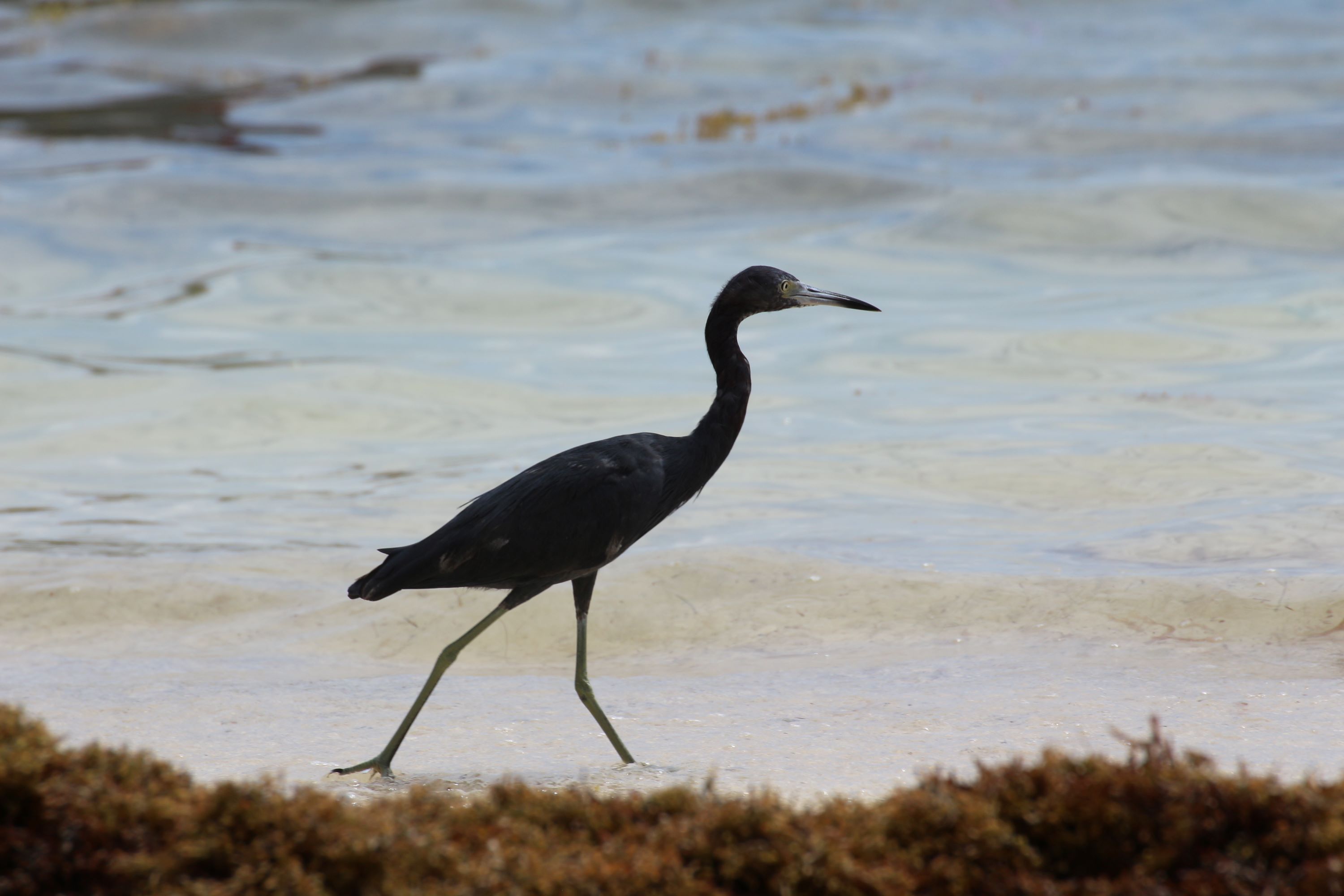
The Great-Billed Heron: The Stealthy Giant of the Tropics
Introduction to the Great-Billed Heron
The Great-Billed Heron, Ardea sumatrana, is a formidable and elusive bird, known for its impressive size and distinctive bill. As one of the largest herons in the world, it inhabits the coastal and island regions of the Indo-Pacific, marking its presence with a blend of majesty and mystery.
Physical Description
An imposing figure, the Great-Billed Heron stands at a height of up to 115 cm, with a wingspan that can reach nearly 2 meters. Its most striking feature is the large, hefty bill, which is dark and dagger-like, perfect for catching prey. The plumage of this heron is primarily slate-grey with a paler throat. Adults exhibit a black cap on their head, and the eyes are yellow, adding to their intense gaze.
Habitat and Distribution
This heron species favors the mangrove swamps, coastal reefs, and estuaries of the tropical Indo-Pacific region. Its range extends from the coasts of East India, through Southeast Asia, to Northern Australia and as far east as the Solomon Islands. The Great-Billed Heron's preference for remote and undisturbed habitats contributes to its reclusive nature.
Behavior and Lifestyle
Ardea sumatrana is predominantly a solitary bird, often seen alone or in pairs, especially during the breeding season. It is crepuscular, being most active during dawn and dusk. Its behavior is characterized by stealth and patience; it stands motionless in shallow waters, waiting to ambush fish and other aquatic prey.
Feeding Habits
The diet of the Great-Billed Heron primarily consists of fish, but it also preys on crustaceans, amphibians, and small reptiles. The heron utilizes its large bill to skillfully spear or grasp its prey, often swallowing it whole. Its hunting technique involves standing still in shallow waters or slowly stalking its prey before striking with lightning speed.
Breeding and Nesting
The breeding habits of the Great-Billed Heron remain relatively understudied. However, it is known that they nest in small colonies or, more commonly, as isolated pairs. Their nests are large platforms made of sticks, usually built in trees close to the water.
Egg Laying and Incubation
The female typically lays two to three pale blue eggs. Both parents share the responsibility of incubating the eggs, which hatch after about a month. The young herons are cared for by both parents and are dependent on them for food and protection during their early life stages.
Conservation Status
Currently, the Great-Billed Heron is classified as Near Threatened by the IUCN. While not immediately at risk of extinction, its populations are affected by habitat loss, especially the destruction of mangrove forests, and by water pollution. Conservation efforts for this species focus on protecting its natural habitats and ensuring the health of the coastal and estuarine ecosystems it relies upon.
Cultural Significance
Though not as widely recognized as some of its heron relatives, the Great-Billed Heron holds a special place in the culture and folklore of the regions it inhabits. Its solitary nature and striking appearance have made it a symbol of mystery and grace in the tropical coastal environments.
Conclusion
The Great-Billed Heron, Ardea sumatrana, is an enigmatic and impressive bird, embodying the wild beauty of the tropical coastal regions it inhabits. While it is not found in places like Utah, its existence highlights the incredible diversity of the heron family and the importance of global conservation efforts to preserve the rich array of bird life and their habitats across our planet.